Papers by Neeraj Verma
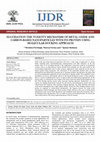
International Journal of Development Research, 2017
Metal oxide and carbon-based nanoparticles (NP) have a wide range of application in various field... more Metal oxide and carbon-based nanoparticles (NP) have a wide range of application in various fields, including paint, electroluminescent, pharmaceutical, and other industries. In the last decade, there is an exceeding demand of the applications using these particles in biomedical sciences such as in drug delivery system whereas these materials are also used widely in the environmental applications. Due to their extensive applications, these materials are the class of highest global annual production. The information of the potentially harmful effect of these nanoparticles lags behind their increased use in consumer products and therefore, the safety data on various nanoparticles applicable for risk assessment is urgently needed. The availability of less information of toxicity and harmful effects on the human biological system of these particles, there is a need to understand the toxicity of metal oxides and carbon-based nanoparticles. In the present study, we elucidate the toxic impact of the metal oxide and carbon-based nanoparticles on p53 DNA binding domain protein using molecular docking approach. Furthermore, we also explore the binding phenomenon between the p53 protein and nanoparticles (metal oxide and carbon-based NP) using the same molecular docking approach. The study illustrates that metal oxide based nanomaterial has a high binding affinity toward the DNA binding domain of p53 protein as compared to carbon-based nanoparticles, this happens because the metal oxide nanoparticles formed hydrogen and metal acceptor bonds whereas in the case of carbon-based nanoparticles only van der Waal interactions were identified in the molecular interaction. Due to the binding of these nanoparticles, DNA is unable to interact with binding domain site which may lead to deactivation of the tumor suppressing nature of the p53 protein.
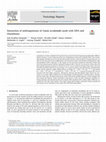
Consumption of Cassia occidentalis (CO) seeds has been associated with the hepatomyoencephalopath... more Consumption of Cassia occidentalis (CO) seeds has been associated with the hepatomyoencephalopathy (HME) in children. Recently, we have characterized the toxic anthraquinones (AQs) such as Emodin, Rhein, Aloe-emodin, Chrysophanol and Physcion in CO seeds and detected these moieties in the bio fluids of CO poisoning cases. As AQs were detected in the serum of HME patients, their interaction with key biomolecules including protein, DNA and glutathione (GSH) is imperative. In this regard, we have previously reported the interaction of these AQs with serum albumin protein and their subsequent biological effects. However, the interaction of these AQs with DNA and GSH remained unexplored. In the present work, we have studied the binding of these AQs of CO seeds with DNA and GSH by fluorescence spectroscopy, UV–vis spectral analysis, molecular docking, and biochemical studies. Results indicated a higher binding affinity for Emodin (K a = 3.854 × 10 4 L mol −1 S −1), Aloe-emodin (K a = 0.961 × 10 4 L mol −1 S −1) and Rhein (K a = 0.034 × 10 4 L mol −1 S −1) towards calf thymus DNA may be associated with their higher cytotoxicity. Alternatively, Physcion and Chrysophanol which showed less cyto-toxicity in our earlier studies exhibited very low DNA binding. The binding pattern of all these AQs is consistent with the in-silico data. Absorption spectroscopy studies indicated the possible formation of GSH conjugate with Aloe-emodin and Physcion. Further biochemical measurement of GSH and GSSG (Glutathione disulfide) following incubation with AQs indicated that Aloe-emodin (28%) and Rhein (30%) oxidizes GSH to GSSG more as compared to other AQs. Taken together, these results suggest that the higher cytotoxicity of Rhein, Emodin and Aloe-emodin may be attributed to their potent DNA and GSH binding affinity.
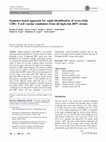
Human papilloma virus (HPV) is the primary etiological agent responsible for cervical cancer in w... more Human papilloma virus (HPV) is the primary etiological agent responsible for cervical cancer in women. Although in total 16 high-risk HPV strains have been identified so far. Currently available commercial vaccines are designed by targeting mainly HPV16 and HPV18 viral strains as these are the most common strains associated with cervical cancer. Because of the high level of antigenic specificity of HPV capsid antigens, the currently available vaccines are not suitable to provide cross-protection from all other high-risk HPV strains. Due to increasing reports of cervical cancer cases from other HPV high-risk strains other than HPV16 and 18, it is crucial to design vaccine that generate reasonable CD8? T-cell responses for possibly all the high-risk strains. With this aim, we have developed a computational workflow to identify conserved cross-clade CD8? T-cell HPV vaccine candidates by considering E1, E2, E6 and E7 proteins from all the high-risk HPV strains. We have identified a set of 14 immunogenic conserved peptide fragments that are supposed to provide protection against infection from any of the high-risk HPV strains across globe.
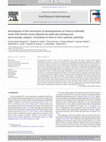
Anthraquinones (AQs) of the Cassia occidentalis (CO) seeds like Rhein, Emodin, Aloe-emodin, Chrys... more Anthraquinones (AQs) of the Cassia occidentalis (CO) seeds like Rhein, Emodin, Aloe-emodin, Chrysophanol, Physcion are known to contribute to the etiology of hepatomyoencephalopathy in children. The present study was carried out to investigate the binding affinity of these AQs with serum albumin, as this protein is mainly involved in the bio-distribution of xenobiotics. Initially, molecular docking was carried for the five AQ ligands with bovine serum albumin (BSA) both by AUTODOCK and CDOCKER docking tools. Subsequently, the binding affinity and mechanism of interaction of these AQs with BSA was studied by fluorescence and UV–visible spectroscopy. Additionally, in vitro cytotoxicity studies of these AQs were carried out in rat primary hepatocytes and HepG2 cells. Results both from molecular docking and fluorescence spectroscopic studies suggest that the interaction energy and binding affinity of above AQs with BSA is in the following order, i.e. Rhein > Emodin > Aloe-emodin > Chrysophanol > Physcion. Interestingly, the observed cytotoxicity of the five AQs in rat primary hepatocyte and HepG2 cells were found to fall in line with the above order. Rhein showing highest toxicity among the AQs showed highest binding affinity to BSA, whereas chrysophanol & physcion, being less toxic exhibited minimal affinity to BSA. Hence, these studies indicate that toxicity of AQs of CO seeds are directly proportional to the protein binding affinity, which may be responsible for the death of children and cattle fed of CO seeds.
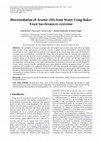
The availability of arsenic in ground water and potable water accounts many toxic effects on huma... more The availability of arsenic in ground water and potable water accounts many toxic effects on human health because of its high toxicity level; it has become a global concern. Previously to decrease As (III) concentration in water various removal methods were explored. In the present study baker yeast Saccharomyces cerevisiae, used as a biosorbate to remediate the Arsenic (III) in the ground water, its capability was examined to sequester the metal ions from the arsenic contaminated water. Initially yeast was grown in YEPD medium and synthetic solution of As (III) was prepared in 3 different conc. 0.2 mg/l, 0.3 mg/l and 0.4 mg/l respectively. Systematic batch kinetic experiments were conducted with various process parameters such as agitation period, pH, and temperature; all the parameters were studied and found that Saccharomyces cerevisiae had very fine competence towards arsenic removal from the contaminated water under optimized condition of agitation period 120 hours, temperature 55ºC and pH 6 were maintained. Removal of As (III) from supernatant was analyzed using the Atomic Absorption Spectrophotometer. It has been found that the percentage removal of Arsenic species (III) increases with decrease in YPD media and Saccharomyces cerevisiae removed 82.2%, 87.8% and 90.46% with respect to different concentration of synthetic solution of As (III) and it is highly effective method for the As (III) removal from the contaminated water.
Epilepsy is a common chronic central nervous system disorder characterized by repeated malicious ... more Epilepsy is a common chronic central nervous system disorder characterized by repeated malicious seizures. Current medications acceptable by medical practitioners till date mostly suppresses the seizures and has symptomatic relief, but no effect on epileptogenesis. In the present work, we have attempted to provide the scientific base to use the bee venom therapy (Apitherapy) which was practiced throughout ancient Egyptian, Greek and Chinese civilization to treat epilepsy. Our computational studies and molecular dynamics simulation results indicate that interaction between S100B (calcium binding protein) and melittin (a venom peptide from bee), resulted in the structural distortion and inaccessibility of calcium binding domain of S100B protein, which is required to maintain ionic imbalance due to over expressed S100B in disease conditions.
Conference Presentations by Neeraj Verma
Studies on the interaction of anthraquinones with bovine serum albumin (BSA) by Moleculasr docking approaches.
Training by Neeraj Verma
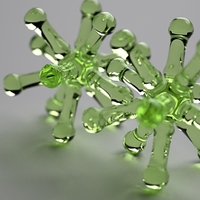
Uploads
Papers by Neeraj Verma
Conference Presentations by Neeraj Verma
Training by Neeraj Verma